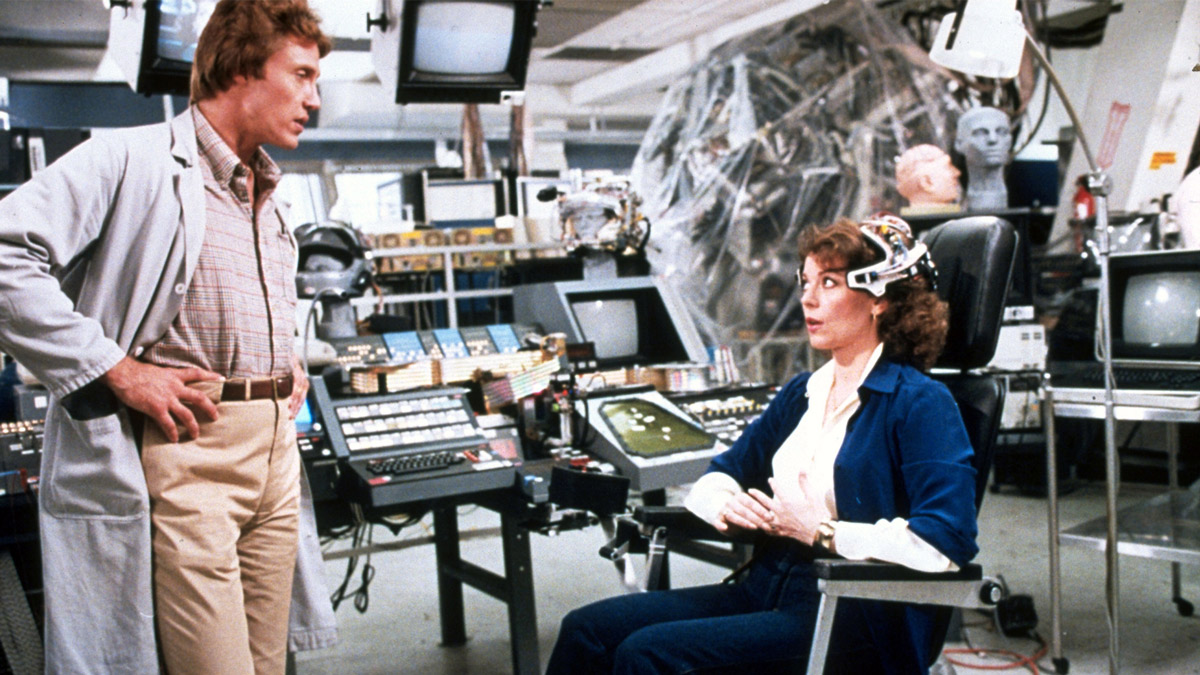
(c) Photofest / Getty Images
"Brainstorm" Douglas Trumbull's ambitious work that pioneered VR (Part 1)
2022.05.04
``Brainstorm'' has finally started moving
So Trumbull approached David Begelman , then president and CEO of MGM (and a symbol of Hollywood's dark side), and pitched him the idea for Brainstorm. Begelman had worked on Close Encounters of the Close Encounters of the Third Kind Kind when he was at Columbia Pictures. MGM was keen on the idea, but still refused to introduce ShowScan.
Trumbull had no choice but to change the method of expressing the difference between the normal scenes and the reality recorder scenes to one that is different from the number of frames, but instead to one that is different in screen size. In other words, the normal scenes were shot on 35mm 4P Panaflex and projected in Europa Vista (1.66:1)(*8). Only the reality recorder scenes were shot on 65mm 5P Super Panavision 70 and projected in 2.21:1 widescreen. The 65mm equipment was again borrowed from Paramount from the FGC era, and in order to clearly differentiate the reality recorder scenes, they were shot with an Omnivision(*9) fisheye lens.
MGM chose Richard Yuricich (who also served as assistant cinematographer) as director of photography. Although he had no prior experience as a cinematographer, he had experience as an assistant cinematographer on films such as Breakout (1975) and The New Moving Target (1975), as well as several commercials, and MGM agreed.
To focus on producing and directing, Trumbull selected EEG employee Allison Yerxa(*10) as the VFX supervisor. She had little experience in the film industry, having worked primarily as a painter and set designer. Trumbull had been impressed by her ability to bring abstract concepts to a coherent visualization when she worked on the blue cloud-like object that surrounded the V'Gar in Star Trek: The Motion Picture .
*7 Begelman was president of Columbia Pictures in 1977 when check forgery and embezzlement were discovered, leading to his expulsion from the studio in 1978 (however, Cliff Robertson, who had accused him of wrongdoing, was shunned by Hollywood, and it was only with Brainstorm that he was finally able to make a comeback). In 1980, he became president and CEO of MGM, but was unable to produce a hit film, and MGM was sold to Turner Broadcasting System in 1985. Begelman committed suicide by shooting himself in the head in 1995.
*8 A method of shooting uncompressed 35mm 4P film and then cropping the top and bottom when printing to make it landscape. The aspect ratio is between standard (1.375:1) and American Vista (1.85:1), which is widely used in Japan. It is different from VistaVision, which uses 35mm 8P film and was used by ILM and Dijkstra's Apogee. VistaVision was originally developed by Paramount in 1954 as a system for shooting 35mm 8P film in a horizontal run to compete with CinemaScope (early ILM purchased Paramount's surplus stock second-hand). As for screening, the first idea was to project 35mm 8P film in a horizontal run, and the aspect ratios at that time were selectable from 1.5:1, 1.66:1, 1.85:1, and 2:1. However, since it required a dedicated projector, it was not widely used in general theaters. In the end, works with the VistaVision logo, such as those seen in Hitchcock films, were either compressed and printed on 35mm 4P film using an anamorphic lens called Varamorph, or printed uncompressed on 4P and projected with black masking above and below. American Vista and European Vista are remnants of the latter.
*9 Omnivision is a lens developed by the Canadian company IMAX in 1973 for OMNIMAX (which changed its name to IMAX Dome in the late 1980s). While the 70mm 15P film-based IMAX projects images onto a giant flat screen, OMNIMAX (IMAX Dome) projects images onto a dome screen used in planetariums using a fisheye lens.
*10 This was the only film for which Yerxa served as VFX supervisor, and since then he has worked primarily as a matte painter.
To be continued
[References]
Cinefex No.14, October 1983
Cinefex No.9, July 1982
Bob Fischer and Marji Rhea, “Interview: Doug Trumbull and Richard Yuricich, ASC,” American Cinematographer (Aug. 1994)
" DOUGLAS TRUMBULL, VES: Advancing New Technologies for the Future of Film ". VFX Voice Magazine. June 25, 2018
Text: Takayuki Oguchi
In 1982, he became the director of Japan's first CG production, JCGL. After working as the head designer for the IMAX Dome 3D video "Universe 2 ~Sound of the Sun~" at the Fujitsu Pavilion at EXPO'90, he became a freelance video creator. Won an Emmy Award for the NHK special ``Life: A 4 Billion Year Distant Journey'' (1994). He is also a video journalist specializing in VFX, CG, 3D movies, art animation, exhibition videos, etc., and has contributed numerous articles to film magazines, theater pamphlets, the web, etc. In addition to being a visiting professor at Digital Hollywood University, he is also a part-time lecturer at Waseda University's Faculty of Science and Technology, Joshibi University of Art and Design, Tokyo University of the Arts Graduate School of Animation, and Japan Electronics College.
(c) Photofest / Getty Images

